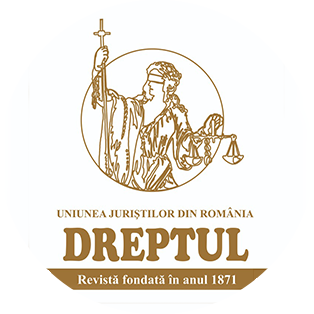-
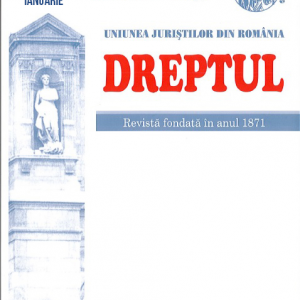 Ending a controversy that lasted for two decades (1991-2011), Law no. 62/ 2011 on social dialogue settled, unequivocally, that in case of triggered and / or continued illegal strikes, the parties responsible are the organizers of the strike and all employees participating in such strikes, be they employees or civil servants. Further, the study proceeds to a thorough analysis regarding the legal nature of restoring liability (civil-tort or civil-contractual) of the organizers of such strikes, as well as of the „employees” (employees or civil servants) participating in such strikes, concluding that the first bear civil-tort liability, and the participating employees bear civil-contractual liability.
Ending a controversy that lasted for two decades (1991-2011), Law no. 62/ 2011 on social dialogue settled, unequivocally, that in case of triggered and / or continued illegal strikes, the parties responsible are the organizers of the strike and all employees participating in such strikes, be they employees or civil servants. Further, the study proceeds to a thorough analysis regarding the legal nature of restoring liability (civil-tort or civil-contractual) of the organizers of such strikes, as well as of the „employees” (employees or civil servants) participating in such strikes, concluding that the first bear civil-tort liability, and the participating employees bear civil-contractual liability. -
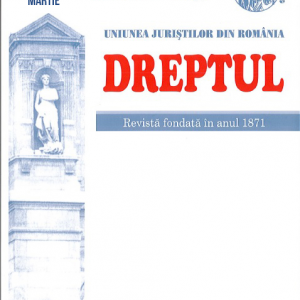 The paper presents the amendments to the Government Ordinance no. 2/ 2001 brought by Law. 76/2012 for implementing Law no. 134/2010 on the Code of Civil Procedure, the Contraventional procedure undergoing major changes with the entry into force of these regulations. Therefore, the steps of the judicial Contraventional procedure are briefly presented through the innovations introduced by the Code of Civil Procedure and, at the same time, the Contraventional law-related issues not yet regulated are analyzed, reiterating the proposal to develop a Contravention Code to regulate matters still confusing of the law material Contraventional and, especially, the ones contravention of the procedure Contraventional.
The paper presents the amendments to the Government Ordinance no. 2/ 2001 brought by Law. 76/2012 for implementing Law no. 134/2010 on the Code of Civil Procedure, the Contraventional procedure undergoing major changes with the entry into force of these regulations. Therefore, the steps of the judicial Contraventional procedure are briefly presented through the innovations introduced by the Code of Civil Procedure and, at the same time, the Contraventional law-related issues not yet regulated are analyzed, reiterating the proposal to develop a Contravention Code to regulate matters still confusing of the law material Contraventional and, especially, the ones contravention of the procedure Contraventional. -
 The author strongly criticizes the regulation stated in art. 519 to 521 of the new (Romanian) Code of Civil Procedure (referral to the High Court of Cassation and Justice for a prior ruling for dispensation of law issues), considering, reasoned, that these texts should be expressly repealed so that, also in the case covered by art. 519, an appeal in the interest of law can be filed (Articles 514 to 518 of the same code).
The author strongly criticizes the regulation stated in art. 519 to 521 of the new (Romanian) Code of Civil Procedure (referral to the High Court of Cassation and Justice for a prior ruling for dispensation of law issues), considering, reasoned, that these texts should be expressly repealed so that, also in the case covered by art. 519, an appeal in the interest of law can be filed (Articles 514 to 518 of the same code). -
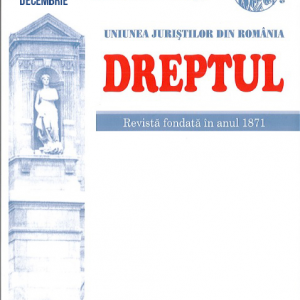 Potrivit art. 320 C.pr.pen., dacã pânã la începerea cercetãrii judecãtorești inculpatul declarã personal sau prin înscris autentic cã recunoaște sãvârșirea faptelor reținute în actul de sesizare a instanței și solicitã ca judecata sã se facã în baza probelor administrate în faza de urmãrire penalã, instanța va pronunța condamnarea inculpatului, care beneficiazã de reducerea cu o treime a limitelor de pedeapsã prevãzute de lege, în cazul pedepsei închisorii…
Potrivit art. 320 C.pr.pen., dacã pânã la începerea cercetãrii judecãtorești inculpatul declarã personal sau prin înscris autentic cã recunoaște sãvârșirea faptelor reținute în actul de sesizare a instanței și solicitã ca judecata sã se facã în baza probelor administrate în faza de urmãrire penalã, instanța va pronunța condamnarea inculpatului, care beneficiazã de reducerea cu o treime a limitelor de pedeapsã prevãzute de lege, în cazul pedepsei închisorii… -
 The development of the regulations in the matter of the consumer protection has contributed significantly to the reconstruction of traditional tort institution, providing a new focus on the fundamentals of such liability, by revaluing its functions and establishing a new coherence. The flaw in the product has been reported to the lack of security that a person can legitimately expect, given the circumstances of the presentation and use at the time of the product release. The breach of the security obligation entails the civil liability for damages to all persons who contributed to a defective product to be acquired by the consumer, from the manufacturer up to the distributor. Within these coordinates, in its study the authors examine the specificity of this civil obligation under the assumption of liability for defective products, in terms of European law regulations, and of the domestic law.
The development of the regulations in the matter of the consumer protection has contributed significantly to the reconstruction of traditional tort institution, providing a new focus on the fundamentals of such liability, by revaluing its functions and establishing a new coherence. The flaw in the product has been reported to the lack of security that a person can legitimately expect, given the circumstances of the presentation and use at the time of the product release. The breach of the security obligation entails the civil liability for damages to all persons who contributed to a defective product to be acquired by the consumer, from the manufacturer up to the distributor. Within these coordinates, in its study the authors examine the specificity of this civil obligation under the assumption of liability for defective products, in terms of European law regulations, and of the domestic law. -
 In the study, the author makes an analysis of the preventive measures applicable to the individual in the system of the new Criminal Procedure Code adopted in Romania. The general conditions to be fulfilled for taking all preventive measures, the particular conditions specific to each measure, the grounds and the procedure to be followed for the determination of such measures, are detailed. The emphasis is laid on the house arrest, an institution that has a new nature in the Romanian criminal procedural legislation, but we pay attention to the manner in which the detention, the preventive arrest, the judicial review and the judicial review on bail. The author makes a number of proposals to improve the legislation in the matter, for those situations in which it considers them to be necessary.
In the study, the author makes an analysis of the preventive measures applicable to the individual in the system of the new Criminal Procedure Code adopted in Romania. The general conditions to be fulfilled for taking all preventive measures, the particular conditions specific to each measure, the grounds and the procedure to be followed for the determination of such measures, are detailed. The emphasis is laid on the house arrest, an institution that has a new nature in the Romanian criminal procedural legislation, but we pay attention to the manner in which the detention, the preventive arrest, the judicial review and the judicial review on bail. The author makes a number of proposals to improve the legislation in the matter, for those situations in which it considers them to be necessary. -
 On the occasion of the modification of the claims regarding the establishment of a seizure, the judge of the cause of action should examine to what extent, from the psychological and legal point of view, the active involvement of the creditor – most often the single litigant who knows the existence of the file – prejudices certain fundamental principles of the civil trial such as the principle of the equality of arms or the principle of contradictoriality. The simple record of the presence of the party, in the absence of the other party, is sufficient to affect, by itself, these cardinal ordinances of the civil trial. The principle of availability cannot justify a proportional reduction in the amount of the bail in relation to the reduction of the sum to the amount to which the establishment of the seizure is required; otherwise, it would create an insurmountable “obstacle” in the path of the debtor which, “exposing” the abusive approach of the creditor subsequently, would be obliged to have its fill of an inappropriate bail of the suffered prejudice.
On the occasion of the modification of the claims regarding the establishment of a seizure, the judge of the cause of action should examine to what extent, from the psychological and legal point of view, the active involvement of the creditor – most often the single litigant who knows the existence of the file – prejudices certain fundamental principles of the civil trial such as the principle of the equality of arms or the principle of contradictoriality. The simple record of the presence of the party, in the absence of the other party, is sufficient to affect, by itself, these cardinal ordinances of the civil trial. The principle of availability cannot justify a proportional reduction in the amount of the bail in relation to the reduction of the sum to the amount to which the establishment of the seizure is required; otherwise, it would create an insurmountable “obstacle” in the path of the debtor which, “exposing” the abusive approach of the creditor subsequently, would be obliged to have its fill of an inappropriate bail of the suffered prejudice. -
 This article discusses the material and territorial jurisdiction for the settlement in the matter of land fund disputes. The material jurisdiction is examined in terms of art. 94 item 1. letter j), art. 94 items 3 and 4, Art. 95 item 1 of the Code of Civil Procedure and the special regulations contained in Law no. 18/1991, as republished, and the territorial jurisdiction of the perspective of art. 107 para. (1), art. 117 of the Code of Civil Procedure and the special law. The jurisdiction issue concerns the various actions on the land fund, arising from the enforcement of the Law no. 18/1991, as republished. The regulation of the jurisdiction of the actions settlement in the matter of the land fund, in favor of the same court, is proposed de lege ferenda.
This article discusses the material and territorial jurisdiction for the settlement in the matter of land fund disputes. The material jurisdiction is examined in terms of art. 94 item 1. letter j), art. 94 items 3 and 4, Art. 95 item 1 of the Code of Civil Procedure and the special regulations contained in Law no. 18/1991, as republished, and the territorial jurisdiction of the perspective of art. 107 para. (1), art. 117 of the Code of Civil Procedure and the special law. The jurisdiction issue concerns the various actions on the land fund, arising from the enforcement of the Law no. 18/1991, as republished. The regulation of the jurisdiction of the actions settlement in the matter of the land fund, in favor of the same court, is proposed de lege ferenda. -
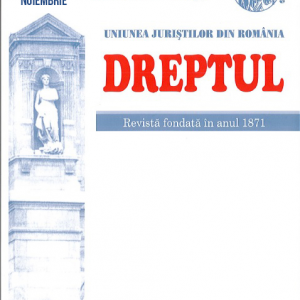 This study aims to develop concepts already outlined in the doctrine, but in the light of the modern law on self-defence and exceeding its limits, containing transitional issues in relation to the new Criminal Code, accompanied by the case law up to date and reasonable own notes, while emphasizing the theoretical and practical controversies encountered. The article is prepared in an analytical style, the author reveals the key aspects regarding certain particularities and difficulties arising from the combination of the letter of the law with its enforcement. In addition to the aforementioned aspects, certain elements related to the comparative law are present, and the provisions of the (European) Convention for the Protection of Human Rights and Fundamental Freedoms concerning self-defence, as well as de lege ferenda proposals.
This study aims to develop concepts already outlined in the doctrine, but in the light of the modern law on self-defence and exceeding its limits, containing transitional issues in relation to the new Criminal Code, accompanied by the case law up to date and reasonable own notes, while emphasizing the theoretical and practical controversies encountered. The article is prepared in an analytical style, the author reveals the key aspects regarding certain particularities and difficulties arising from the combination of the letter of the law with its enforcement. In addition to the aforementioned aspects, certain elements related to the comparative law are present, and the provisions of the (European) Convention for the Protection of Human Rights and Fundamental Freedoms concerning self-defence, as well as de lege ferenda proposals. -
 In this article, the author makes some observations about the documents necessary to carry out the real estate publicity formalities as a result of the division of a company. The non-unitary practice of courts and offices of cadastre and land registration in respect of the documents which require to be authenticated for validity and tabulation purposes lead to a non-unitary notarial practice, as well. Dissenting opinions appearing on the transfer of ownership basis and on the time of this transfer, lead to different views on the legal nature of notarial documents processed, which is reflected finally in the taxation field. This study supports the contractual nature of a division, and the manifestations of the final will are expressed, in principle, by the decisions of the general meetings of the companies involved in the division, by which they approve the terms of the transaction. That is, in the author’s opinion, in case of the transfer of real property right, these decisions require to be authenticated.
In this article, the author makes some observations about the documents necessary to carry out the real estate publicity formalities as a result of the division of a company. The non-unitary practice of courts and offices of cadastre and land registration in respect of the documents which require to be authenticated for validity and tabulation purposes lead to a non-unitary notarial practice, as well. Dissenting opinions appearing on the transfer of ownership basis and on the time of this transfer, lead to different views on the legal nature of notarial documents processed, which is reflected finally in the taxation field. This study supports the contractual nature of a division, and the manifestations of the final will are expressed, in principle, by the decisions of the general meetings of the companies involved in the division, by which they approve the terms of the transaction. That is, in the author’s opinion, in case of the transfer of real property right, these decisions require to be authenticated. -
 This study presents the specific elements of the security obligation, having as benchmarks the scope, the legal nature and the fundamentals of the civil repair liability and preventive, anticipatory liability based on the precautionary principle. The stated conclusions try to define this obligation, thus providing a useful approach to the legal action of the creditor regarding the debtor’s liability for infringement of that obligation.
This study presents the specific elements of the security obligation, having as benchmarks the scope, the legal nature and the fundamentals of the civil repair liability and preventive, anticipatory liability based on the precautionary principle. The stated conclusions try to define this obligation, thus providing a useful approach to the legal action of the creditor regarding the debtor’s liability for infringement of that obligation. -
 The author aims to discern the will of the legislator, expressed in the text of the art. 1856 of the new Civil Code, titled marginally “workers’ direct action”. This approach has led to some recent doctrinal views by which the direct action is recognized to subcontractors as well, including those who have the status of legal entity. The author argues that the mentioned legal text has to be interpreted as meaning to the recognition of the direct action only to certain individuals, i.e. to workers and subcontractors-individuals (the latter under certain conditions: working alone or employing workers, working with them to achieve the work / to render the services). In the study, certain practical situations are brought to light, in which the question of determining the holders of direct action is raised, in case of the subcontractor agreements. The author considers as possible, “de lege ferenda”, regulating a direct action both in favour of the subcontractors-individuals using workers and in favour of the subcontractors-legal entities, but only for the price of work/rendering of services which excludes the price of the workers’ activity.
The author aims to discern the will of the legislator, expressed in the text of the art. 1856 of the new Civil Code, titled marginally “workers’ direct action”. This approach has led to some recent doctrinal views by which the direct action is recognized to subcontractors as well, including those who have the status of legal entity. The author argues that the mentioned legal text has to be interpreted as meaning to the recognition of the direct action only to certain individuals, i.e. to workers and subcontractors-individuals (the latter under certain conditions: working alone or employing workers, working with them to achieve the work / to render the services). In the study, certain practical situations are brought to light, in which the question of determining the holders of direct action is raised, in case of the subcontractor agreements. The author considers as possible, “de lege ferenda”, regulating a direct action both in favour of the subcontractors-individuals using workers and in favour of the subcontractors-legal entities, but only for the price of work/rendering of services which excludes the price of the workers’ activity.
